Editor’s Note: CNN Travel’s series often carries sponsorship originating from the countries and regions we profile. However, CNN retains full editorial control over all of its reports. Read the policy.
The dancing begins almost as soon as the sun sets on Sanya, in southern Hainan.
Dozens of locals – some in costume, some without – set up in the wide paved areas beneath the palm trees, along the famous long white shoreline of Sanya Bay.
Then, to the beat of an electronic boombox or traditional Chinese performers holding drums and cymbals, the synchronized movements begin.
Watching the dancing as the waves break on the shore, on a balmy summer evening, it’s easy to see why Hainan, an island and the southern-most province in China, has long been known in advertising campaigns as the “Hawaii of China.”
But only a few hundred meters down Sanya Bay, a different side of Hainan is glittering and glowing in the growing dark.
On a newly reclaimed island on one edge of the bay, the imposing towers of Phoenix Island are projecting a light show.
Giant diamonds sparkle on the sides of the massive hotel, followed by hundred-meter high dolphins splashing across an animated sea.
It’s just one of a growing number of extravagant Hainan resorts and hotels, each trying to out do each other in novelty and grandeur.
‘A little dream to go to Hainan’
The next day, dressed in full suits and glamorous dresses beneath the beating tropical sun, couples pose to have their wedding photos taken beneath the palm trees and beside the white sand.
Around them, dozens of tiny white crabs scuttle from hole to hole along the beach, an example of the natural beauty which has lured the couples here to make Hainan a permanent part of their memories together.
Wei Kailei, dean of the College of Tourism at Hainan University, tells CNN the island is a “world-class attraction.”
“It is well known as an island of leisure, vacation and longevity,” he says. “The blue sky and pure water in Hainan are even more precious, contrasted with the rest of the nation plagued by smog.”
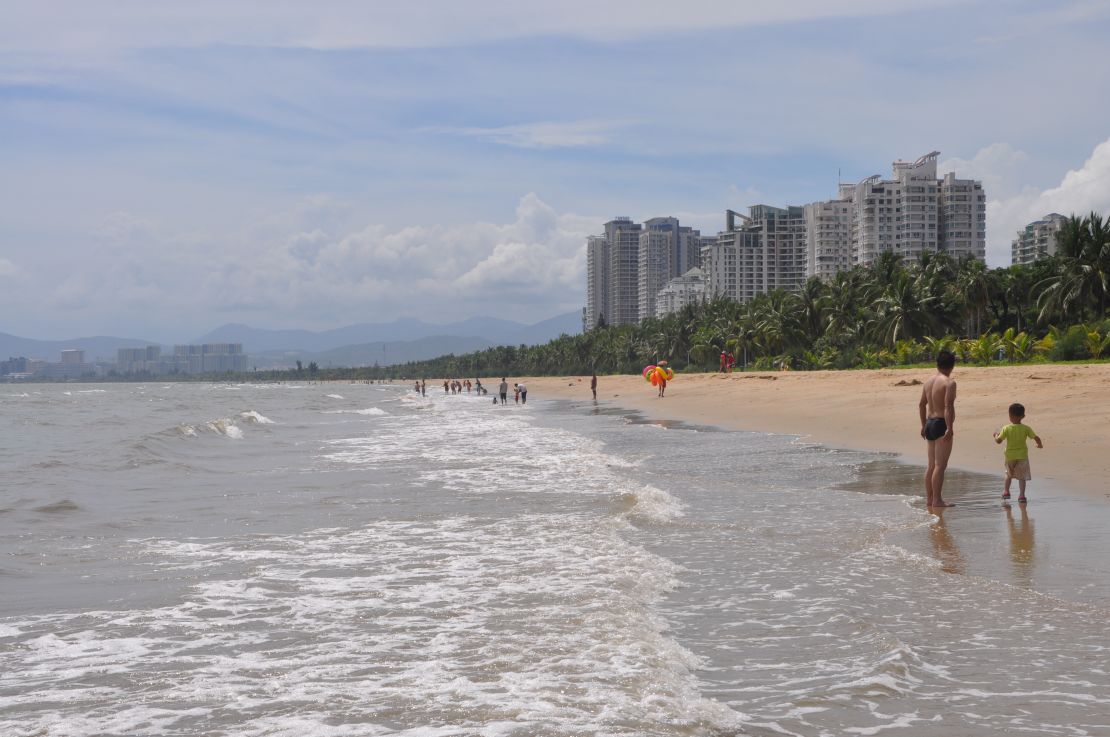
Sichuan native Thomas Liu brought his wife and his son to Hainan all the way from their central China hometown of Chengdu.
“For (my son) to see how broad the sea is and have a beach where he can play? It’s great for him,” he says, while walking along Yalong Bay.
“I think many people, when we are young, we know that Hainan is a very beautiful place, so I think for many people they have a little dream to go to Hainan.”
Despite the island’s natural beauty, however, Liu says it’s becoming a little too popular.
“There’s too many people here, from now I think all over the world and all over China,” he says.
According to the provincial statistics bureau, more than 60 million tourists made trips to Hainan in 2016, up 12.9% compared to the previous year.
But the island and its main cities of Haikou and Sanya are popular tourist destinations not just for Chinese but also for many Europeans.
Valter Julia, a Russian citizen from the city of Norilsk, says she and her partner came to Hainan nine years ago for the first time and, after they had a son, they’d wanted to return.
“I think it is a good place to have a rest … Very special and very pleasurable place,” she says.
‘Oriental Dubai’
Increasingly, rather than Hawaii, parts of Hainan bring to mind the unashamed extravagance of Dubai, the wealthy United Arab Emirates city state that once built a man-made island in the shape of a map of the world.
The huge, curved towers of Phoenix Island catch the eye the moment you walk down to Sanya Bay.
The futuristic hotel has changed the skyline of Sanya Bay dramatically. Connected to the city by a long bridge, which only guests can cross, the artificial island gives off the air of outrageous opulence.
In the lead up to the launch of Phoenix Island, it was even described in promotional literature as the “Oriental Dubai.”
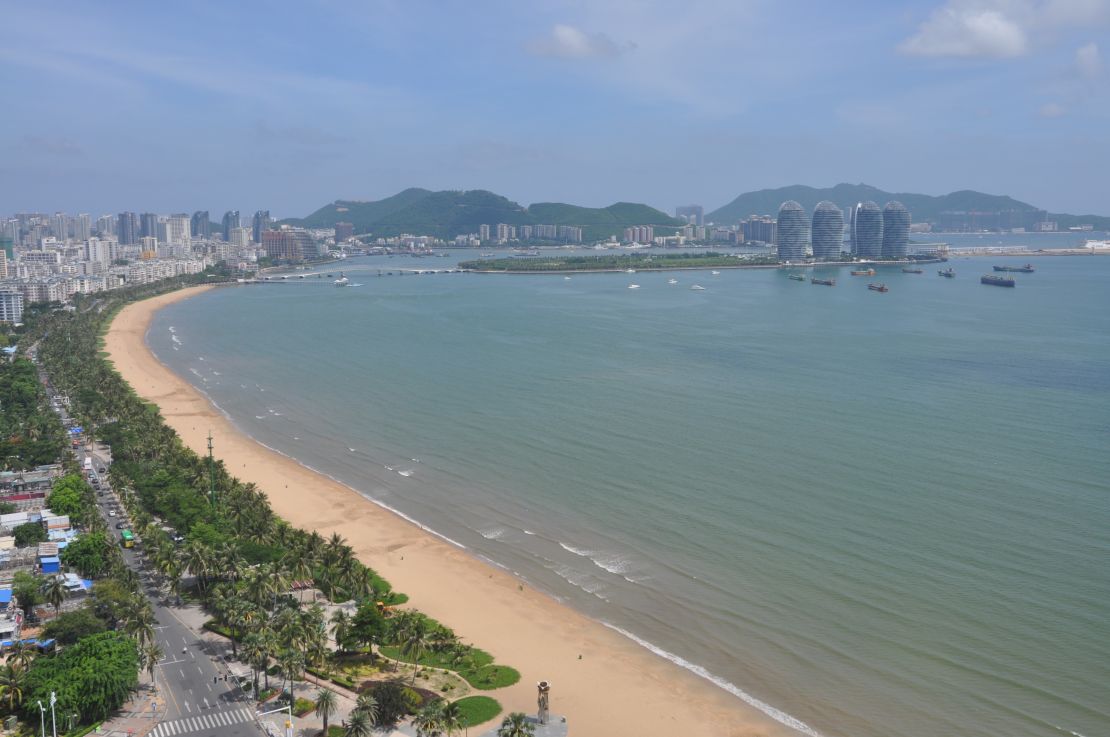
Phoenix Island isn’t the only artificial land mass being constructed in Hainan. In the north, off the coast of Haikou, a massive island the shape of a yin-yang symbol is being built, according to the local government’s website.
Once finished it’ll feature a new hotel, a yacht club, a cruise port and a waters sports area.
In Sanya city, away from beach, an ambitious new hotel has been built in the shape of nine enormous green trees.
“Hainan is the largest special economic zone, the only international tourist island and the first tourist model construction zone in China,” says Wei.
“Everyone in the province puts great effort into infrastructure and environment, aiming to provide tourists high quality attractions, facilities, environment and services.”
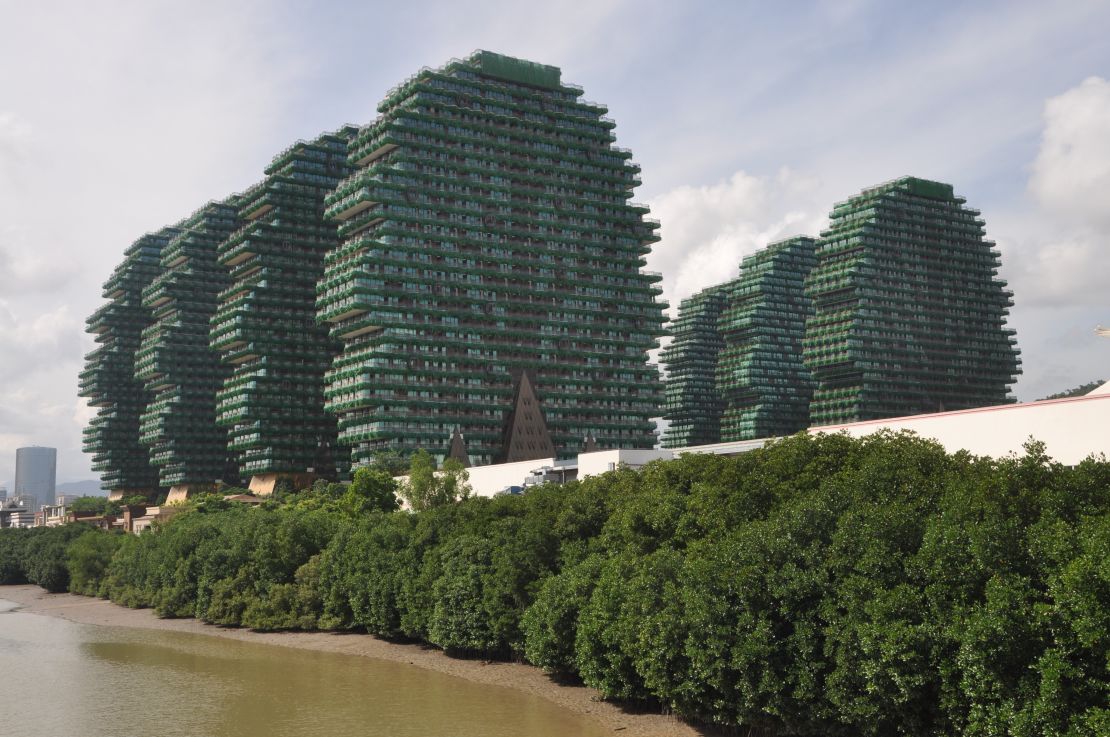
108-meter Buddha
It isn’t just apartments and hotels anxious to steal the limelight on Hainan.
In the island’s south, an enormous white statue of the Bodhisattva Guanyin stands on an artificial island at the center of a sprawling temple complex.
Finished in 2005, the 108-meter high statue was reportedly consecrated by 108 Buddhist monks from across China. It’s an appropriate choice, as she is sometimes known as “Guanyin of the Southern Seas.”
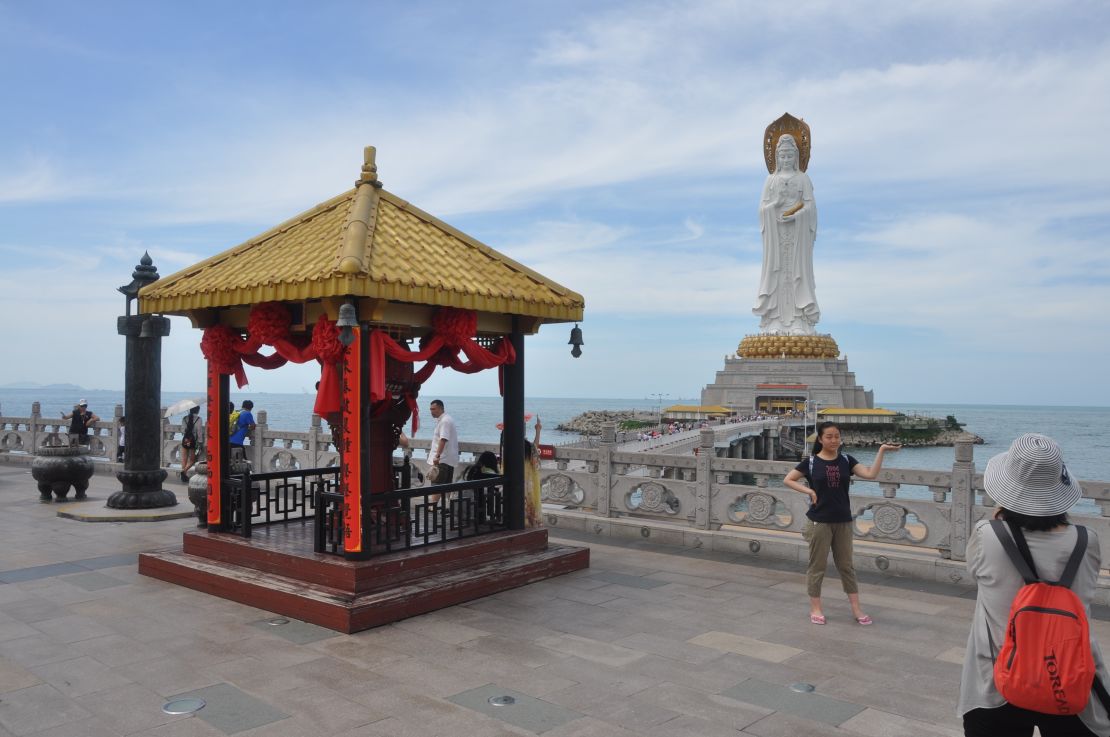
Some 15% of the Chinese population consider themselves to be Buddhist, according to 2014 stats, so it’s no surprise this is a popular landmark.
Even on a weekday, hundreds of predominantly Chinese tourists pour into the temple grounds to see the sights and pray to Guanyin. At the altar leading to bridge to the statue, the air is thick with incense and pilgrims wrestle for kneeling space.
As you walk towards the enormous Buddha, the path on both sides is cluttered with stores selling memorabilia and expensive tea.
Even once you get inside the enormous statue, surrounded by the piped sounds of Buddhist chanting, the interior has half a dozen more opportunities to buy merchandize and commemorations.
At the very foot of the statue, up a lift and then hundreds of steps, one woman grips the Bodhisattva’s enormous toe and implores her loudly, “Ah! Guanyin Buddha!”
A uniformed guard shushes her and encourages passersby to move on.
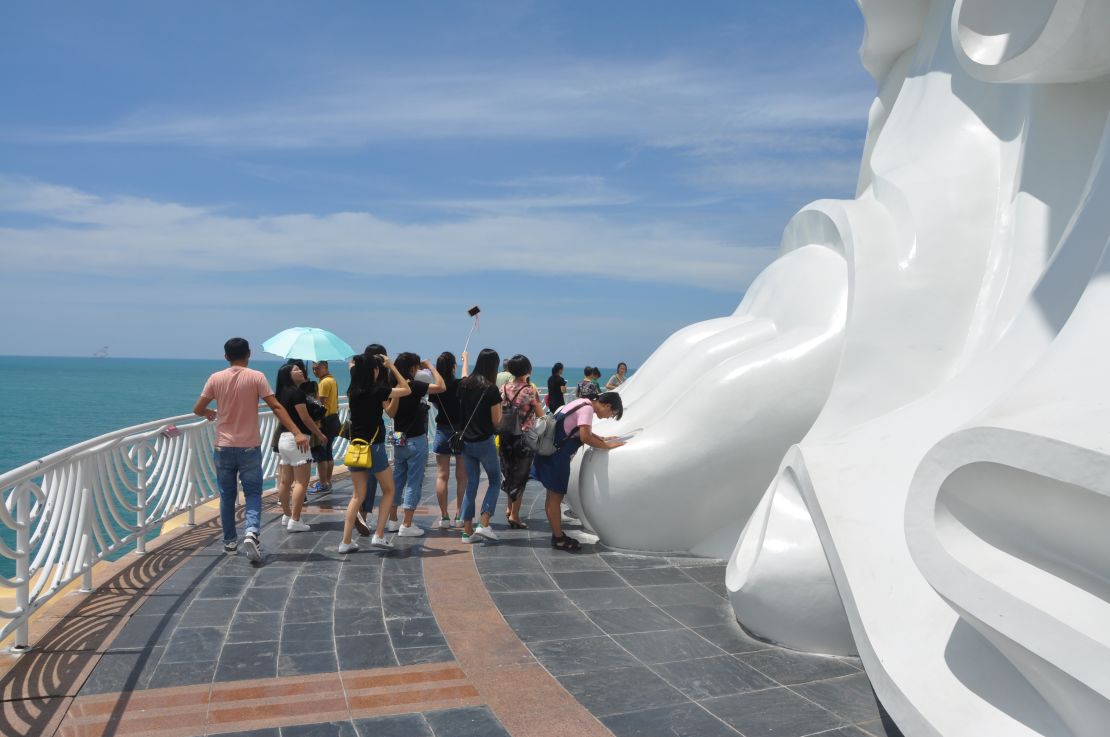
No slowing down
Back in Sanya Bay, the sun is beginning to set again and locals on dozens of motorbikes are pulling up to the shoreline to watch the imminent entertainment.
As with so much of Hainan, the dancing is a combination of the old and the new. Some women and men, dressed in full costume, are performing a traditional square dance or guangchang wu. Next to them, other performers dressed in leotards are moving in time to modern pop songs.
This contradiction, a combination of Hawaii and Dubai, appears here to stay – for now at least.
As the dancing begins again in the sweltering heat, the giant diamonds of Phoenix Island light up and begin to spin.
Getting to Hainan: Sanya International Airport services flights from a number of cities in the region including Hong Kong, Shanghai and Singapore.
CNN’s Serenitie Wang contributed to this report.













